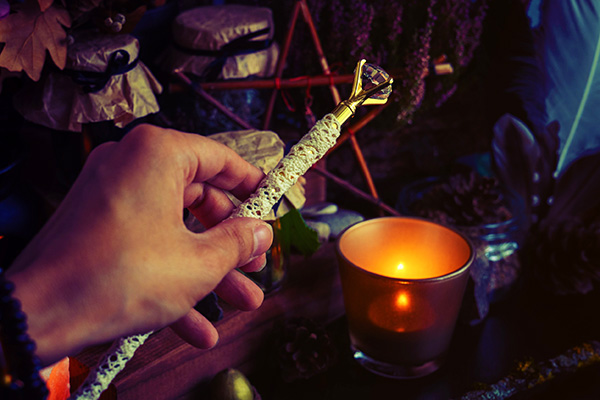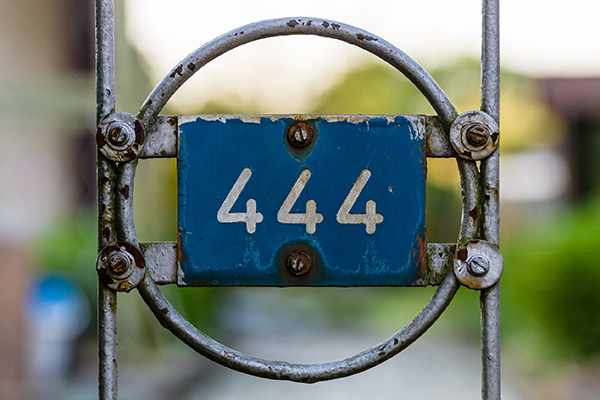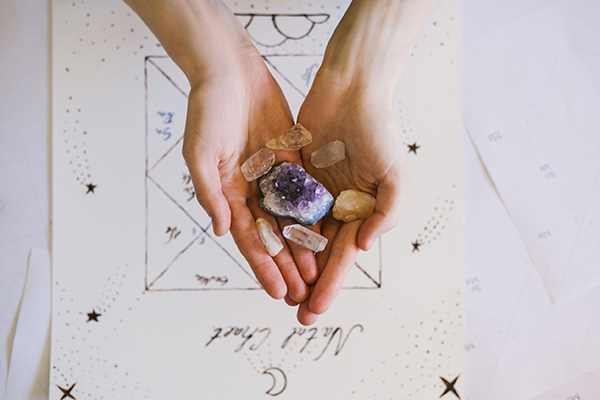Harnessing the Energy of Blooms to Restore Your Chakras
 Plants have been celebrated as nature’s healers for ages, providing remedies for numerous physical conditions. However, aside from their conventional medicinal roles, flora—especially blooms—possess remarkable energetic qualities that can significantly influence our overall wellness.
Plants have been celebrated as nature’s healers for ages, providing remedies for numerous physical conditions. However, aside from their conventional medicinal roles, flora—especially blooms—possess remarkable energetic qualities that can significantly influence our overall wellness.
As someone who firmly believes in the curative attributes of plants, I have witnessed firsthand the harmonious alliance between our bodies, minds, and spirits with Mother Nature.
Particularly, flowers, with their exquisite charm, fragrant essential oils, and delicate vibrational energies, harbor substantial healing capabilities.
It’s no accident that blooms feature prominently in various cultural practices to express empathy and compassion, offering solace and enhancing wellness. This goes beyond their aesthetic appeal; they truly encompass profound healing abilities.
Across diverse cultures, flowers are employed to demonstrate sympathy and encouragement. For instance, sending a bouquet of “get well soon” flowers to someone recuperating from illness or surgery is quite common. Variants like lilies and daisies are often favored for their connotations of purity and joy, assisting in uplifting the spirits of the recipient and promoting emotional recovery.
In Japan, the tradition of gifting flowers, known as hanakotoba (the language of flowers), is deeply woven into cultural practices. Each flower carries a distinct meaning, conveying sentiments such as sympathy, honor, or congratulations. Chrysanthemums symbolize longevity and are frequently given to the sick or elderly to express wishes for good health and extended life. The careful selection of flowers is thought to bring emotional comfort and healing.
Flowers always improve people’s spirits, making them more joyful and considerate; they are nourishment, sunshine, and medicine for the soul ~ Luther Burbank
In India, blooms hold significant importance in both everyday life and spiritual customs. Marigolds are commonly used in religious ceremonies and celebrations to signify good fortune and uplifting energy. During times of grief or illness, marigolds and other flowers are offered at temples or placed throughout homes to provide comfort and spiritual support. They’re believed to possess purifying and healing properties, aiding in alleviating emotional distress and fostering recovery.
Within Chinese traditions, flowers like peonies and orchids are linked to health, prosperity, and joy. In moments of illness or hardship, these flowers are gifted as gestures of encouragement and sincere well-wishes. The art of flower arrangement, also known as ikebana, is embraced as a meditative and healing practice.
Incorporating Flowers in Chakra Healing
Flowers can effectively activate and harmonize the energy centers in our bodies, known as chakras.
The chakras represent crucial subtle energy points within our auric field, each corresponding to various physical, emotional, and spiritual facets of our existence. A balanced chakras system allows life energy to flow freely through us, enhancing health and vigor.
Conversely, an imbalance or stagnation in the chakras can result in emotional struggles, physical manifestations, spiritual disconnect, or an overall feeling of dissatisfaction.
I discover that flowers, with their distinct vibrational frequencies and healing attributes, serve as valuable tools for reestablishing balance within our chakras while acting as catalysts for energy healing and wellness. Integrating these natural healers into your daily life can result in profound changes.
Whether you’re well-versed in chakra healing or new to the idea, the insights provided here will illuminate the extraordinary ways flowers can enhance your path to improved health, harmony, and spiritual fulfillment.
There are numerous techniques to utilize flowers for chakra activation, balancing, and healing:
Essential Oils: The fragrant qualities of floral essential oils, like rose or lavender, can invigorate the chakras when applied to pulse points or diffused in the atmosphere. Each oil resonates at a frequency that aligns with specific chakras.
Essences: These liquid floral extracts carry the plant’s vibrational energy. Flower essences may be consumed, applied externally, or added to bath water to promote balance in targeted chakras.
Elixirs, Tinctures & Teas: Just like flower essences, elixirs and tinctures can be ingested to aid chakra activation and equilibrium. Each mixture is crafted to align with specific energy centers, restoring harmony and fostering overall wellness. Herbal teas infused with energetically compatible flowers can be enjoyed as a gentle, nurturing method to support internal chakra healing.
Meditations: Utilizing flowers in meditation can channel focus towards particular chakras. Holding or visualizing a flower during concentration on the respective chakra can activate and harmonize that energy center.
Crystal Grids: Organizing flowers alongside healing crystals in a geometric formation around the body can amplify their energetic influence on the chakras. This grid generates a strong synergy between floral elements and stones for chakra healing.
Bathing: Immersing in a bath infused with fresh flowers or petals provides a nurturing method for absorbing their healing energies. Different blooms align with specific chakras, so choosing the right mixture can promote chakra balance.
Smudging & Incense: Burning dried flowers like lavender or rose petals as incense can dispel stagnant energy from the chakras. The smoke from these sacred botanicals cleanses the aura and restores equilibrium to the energy centers.
Jewelry & Clothing: Decorating yourself with floral motifs, whether through jewelry, attire, or floral designs, can help align and activate your chakras throughout the day.
It’s crucial to select flowers that resonate with each chakra. Distinct blooms possess unique energy signatures, corresponding to specific chakras. Just as the vibrational frequencies of various colors, sounds, and crystals connect with particular energy centers, so do certain flowers.
The tiniest flower embodies a thought, a life responding to some aspect of the Great Whole, of which they have an enduring intuition ~ Honore de Balzac
By engaging with the appropriate flowers, we can access their metaphysical qualities to activate, balance, and heal our chakras, encouraging overall health and wellness. Here are some guidelines and concepts to achieve this:
Root Chakra (Muladhara)
The root chakra, situated at the base of the spine, acts as your energetic link to the earth. When this chakra is in balance, it nurtures a sense of stability, security, and grounding. However, an imbalanced root chakra may leave you feeling stagnant, disconnected, or preoccupied with unproductive matters.
To activate and harmonize this chakra, red blooms like roses or carnations are potent allies. Surround yourself with these flowers or utilize essential oils from grounding plants such as patchouli and vetiver.
Flower essences from stinging nettle, blackberry, or garlic flowers can further support this chakra, helping you reconnect with your life force. A flower bath infused with red petals or a crystal flower grid featuring red stones like garnet can offer additional grounding energy.
Sacral Chakra (Svadhisthana)
Located between the navel and the pubic bone, the sacral chakra governs creativity, pleasure, and emotional equilibrium. An imbalance in this energy center may leave you feeling unsatisfied, disconnected, or emotionally obstructed.
Orange blossoms such as marigolds, orange tulips, or tiger lilies can help restore harmony to this chakra. Place them in your environment or add their petals to a warm bath to enhance emotional energy flow.
A sacral chakra meditation utilizing a flower essence like Cerato can unlock creative potential and reignite motivation. For additional healing, burn dried marigold flowers or incorporate their essential oils into your self-care rituals.
Solar Plexus Chakra (Manipura)
Manipura is the center of willpower, identity, and self-assurance. An underactive solar plexus may result in low self-esteem or lack of initiative, while an overactive solar plexus might cause stubbornness and irritability.
Yellow flowers such as daffodils, dandelions, or sunflowers can help to modulate this chakra’s energy. Keeping these blooms visible can remind you of your inner strength, or you may meditate with them to regain your sense of purpose.
A flower essence like Larch can offer additional support by fostering self-belief and resolve. Wearing yellow attire or carrying yellow petals can further stimulate this chakra’s energy.
Heart Chakra (Anahata)
The heart chakra governs love, compassion, and connections. When this chakra is out of alignment, it may lead to feelings of jealousy or emotional detachment. A balanced heart chakra enables you to give and receive love without restraint.
Green and pink flowers like roses, orchids, or carnations are particularly beneficial for this chakra. Form a flower grid using these blooms or diffuse their essential oils to invite love and harmony into your life. Flower essences like wild rose or willow herb can assist in releasing emotional burdens and enhancing your capacity to nurture others.
Throat Chakra (Vishuddha)
The throat chakra serves as the center for communication and self-expression. Blockages in this chakra may make it challenging to articulate your truth or feel unheard.
To harmonize this chakra, work with blue flowers such as forget-me-nots, bluebells, or cornflowers. Keeping them around your workspace encourages clear communication, or wearing a necklace featuring a blue flower pendant can activate self-expression energy. Applying German chamomile flower essence and lavender oil to the throat can alleviate obstructions and foster honest dialogue.
Third Eye Chakra (Ajna)
The third eye chakra, located between the eyebrows, represents intuition, insight, and perception. A well-balanced third eye opens doors to heightened awareness and psychic abilities.
Indigo flowers such as violets, sweet peas, and lilac can amplify the energy of this chakra. Engage them in meditation or position them on your altar to invite intuitive clarity. Flower remedies like clary sage or rosemary assist with enhancing perception and sharpening mental focus. You can even burn violet-scented incense to deepen meditation and promote intuitive flow.
Crown Chakra (Sahasrara)
The crown chakra, located at the top of the head, links you to higher consciousness and divine energy. A balanced crown chakra supports spiritual enlightenment, whereas an imbalanced crown chakra can cultivate closed-mindedness or feelings of disconnection.
White and violet blooms like jasmine, white lilies, or lavender can aid in balancing this chakra. Position these flowers in sacred areas or wear a crown of fresh jasmine during meditation to enhance spiritual awareness. Flower essences like lavender or frankincense assist in connecting with your higher self, encouraging profound spiritual transformation and clarity.
Flowers have communicated with me more than words could ever express. They are the hieroglyphics of angels, cherished by humanity for their character’s beauty, though few can interpret even portions of their significance ~ Lydia M. Child
Visualized Meditation for Chakra Balancing
Visualizing flowers during chakra healing meditations is extraordinarily potent, as it aligns with the ancient symbolism of the lotus in spiritual teachings and traditions concerning chakras.
The concepts of chakras and lotus primarily originate from Hinduism and Tantric Buddhism. Both traditions perceive the lotus as a metaphor for spiritual development, flourishing beautifully despite muddy waters, symbolizing the capacity to transcend worldly challenges and attain spiritual wisdom.
In Hinduism, chakras are detailed in ancient spiritual texts known as the Vedas and Upanishads, depicted as energy centers along the spine. Each chakra corresponds with a lotus depicting a specified number of petals, representing various levels of consciousness and spiritual energy. The lotus is a potent insignia in Hindu culture, often linked to purity, regeneration, and spiritual enlightenment.
In Tantric Buddhism, the chakras and lotus symbolism also take center stage in practices aimed at spiritual awakening and realizing one’s true nature. The concept of the “vajra body,” consisting of energy channels and chakras, is integral to Tantric teachings, where the lotus symbolizes the unfolding journey towards enlightenment.
By visualizing flowers aligned with each chakra during healing meditation, you tap into the rich symbolism and esoteric knowledge of this tradition, strengthening the connection between your energy centers and spiritual advancement, much like the blossoming of a lotus.
Here is a visualized meditation that utilizes the vibrant essence of flowers for chakra balancing and alignment, aiding you in cultivating a state of inner tranquility, balance, and holistic wellness.
PREPARATION
Seek a peaceful, comfortable setting where you can remain undisturbed. Sit or lie down in a relaxed posture, ensuring your spine is straight. Take several deep breaths to ground yourself, inhaling through the nose and exhaling slowly through the mouth. Close your eyes, fully immersing in the present moment.
ROOT CHAKRA (MULADHARA) — RED ROSE
Visualize a radiant red rose unfurling at the base of your spine. Picture its deep crimson petals opening and connecting you to the earth. As the flower blooms, sense its energy flowing through your legs and feet, linking you to the earth’s energy. With each breath, see the flower becoming more vivid, solidifying your sense of grounding, security, and stability.
Affirmation: I am grounded, safe, and connected to the earth.
SACRAL CHAKRA (SVADHISTHANA) — ORANGE MARIGOLD
Shift your focus to the area just below your navel. Visualize a bright orange marigold opening its petals, emanating warmth and creativity. Feel its energy flowing through your hips and lower abdomen, awakening your passions, emotions, and creative impulses. With each breath, the marigold brightens, harmonizing your emotions and enhancing your sense of joy.
Affirmation: I embrace my creativity and flow with the energy of life.
SOLAR PLEXUS CHAKRA (MANIPURA) — YELLOW SUNFLOWER
Redirect your attention to your solar plexus, above your navel. Visualize a vibrant yellow sunflower flourishing and filling your abdomen with its radiant golden glow. Feel its energy activate your inner strength, confidence, and personal will. With each breath, the sunflower gains intensity, empowering you to take decisive steps in your life.
Affirmation: I am powerful, confident, and in control of my destiny.
HEART CHAKRA (ANAHATA) — PINK LOTUS
Direct your awareness to the center of your chest, your heart chakra. Visualize a gentle pink lotus gracefully unfurling, its petals expanding with love and compassion. Feel its energy filling your heart space, radiating warmth and unconditional love throughout your being. As the lotus blossoms, sense yourself becoming more open, kind, and forgiving towards yourself and others.
Affirmation: I am open to love, and I freely give and receive love.
THROAT CHAKRA (VISHUDDHA) — BLUEBELL FLOWER
Turn your attention to your throat. Visualize a delicate bluebell flower blossoming at the center of your throat. Feel its soothing blue energy calming your throat, enabling clear and truthful communication. With each breath, the bluebell gently vibrates, enhancing your capacity to express your truth and listen with empathy.
Affirmation: I speak my truth clearly and confidently.
THIRD EYE CHAKRA (AJNA) — INDIGO VIOLET
<pShift your focus to the space between your eyebrows, your third eye. Visualize an indigo violet blooming in this area, its deep purple glow radiating clarity and intuition. Feel its energy expanding your inner vision, sharpening your consciousness, and enhancing your intuitive perceptions. As the violet blossoms, experience heightened insight and wisdom, seeing the world with renewed clarity.
Affirmation: I trust my intuition and see things clearly.
CROWN CHAKRA (SAHASRARA) — WHITE LOTUS
Lastly, bring your focus to the top of your head, your crown chakra. Visualize a luminous white lotus blossoming at your crown, its petals extending upward toward the sky. Feel its pure white light connecting you to divine energy and expanding your awareness of higher consciousness and spiritual insight. With every inhalation, the lotus grows, filling you with a profound sense of peace, unity, and connection to the cosmos.
Affirmation: I am connected to the divine, and my mind is free.
CLOSING
Take a few deep breaths, breathing in deeply and exhaling completely. Gradually begin to move your fingers and toes to bring your consciousness back to your physical form. When you’re ready, gently open your eyes. Take a moment to sit in silence to absorb the meditation’s energy, feeling balanced, grounded, and at peace.
|
Lucinda is an exceptionally trained Intuitive and Empath residing in a charming village in North Yorkshire, England. She has the rare gift of comprehending a client’s personal struggles and has navigated many challenges herself, which has only fortified her resilience! It is both her purpose and joy to assist those in need. Whenever she seeks support, her Guides are always present to aid her development and provide clear guidance for her clients. Prediction has always been a reliable tool for her to accurately foresee events, but Lucinda also utilizes her knowledge in Dream Interpretation, Numerology, Angel Cards, the Law of Attraction, and Life Coaching to offer comprehensive and detailed solutions to any issue. As a member of AMORC and Beyond Freedom Evolution, she provides inspiration, education, and personal backing for spiritual growth. Should you desire answers or wish to manifest your wishes, you can find Lucinda at PsychicAccess.com. |














